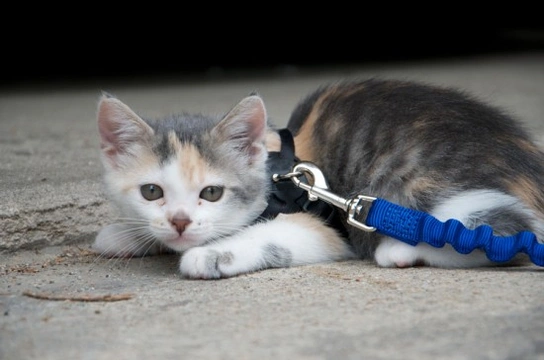
Step-by-Step Guide to Teaching Your Indoor Kitten to Walk on a Harness
Teaching your indoor kitten to walk on a harness can be a rewarding experience that encourages safe outdoor exploration while providing much-needed exercise and mental stimulation. This comprehensive guide outlines a gentle, step-by-step process to help your kitten become comfortable wearing a harness and walking on a lead.
1. Choose the Right Harness and Equipment
Select a harness specifically designed for kittens or cats, ideally one where the lead attaches to the body rather than the neck to prevent choking. Ensure you can comfortably fit two fingers under the harness to avoid it being too tight or restrictive. Pair this with a lightweight lead to avoid weighing down your kitten. Always prioritise your kitten’s comfort and safety during training.
2. Introduce the Harness Indoors
- Familiarisation: Begin by placing the harness near your kitten’s favourite resting spots or during playtime to let them sniff and investigate it with curiosity rather than fear.
- Initial Wearing: Gently put the harness on for short periods indoors, speaking softly and offering treats or cuddles to build positive associations.
- Increase Duration: Gradually increase the time your kitten wears the harness each day, rewarding calm behaviour and making it a pleasant routine.
3. Attach the Lead and Practice Indoors
- Drag the Lead: Attach the lead indoors but initially let it drag behind your kitten, allowing them to get used to the sensation without restraint.
- Hold the Lead: When relaxed, pick up the lead and walk gently with your kitten around the house, following their lead as they explore at their own pace.
- Gentle Guidance: Start encouraging movement in different directions, never pulling or jerking the lead. If your kitten resists or pulls, pause, praise when they calm down, and resume once they are settled.
4. The First Outdoor Introductions
Rather than letting your kitten dash straight into the garden, carry them to a quiet, safe spot like an enclosed yard or patio. Open the door and allow your kitten to see and smell the outdoors while still in your arms. Watch for signs of nervousness such as shaking or freezing, and if these occur, return inside calmly. Gradually increase the distance and time your kitten spends outdoors on lead daily, ensuring every experience is positive.
5. Outdoor Walking Sessions
- Encourage Exploration: Place your kitten on the grass and let them sniff and investigate. Expect the kitten to be cautious, retreating at noises or moving slowly.
- Stay Close and Patient: Keep the lead loose and follow your kitten’s pace. If they pull or try to dash off, stand still and wait for them to settle before proceeding.
- Use Praise and Treats: Reinforce calm, confident behaviour with gentle words and favourite treats to build trust and confidence.
6. Common Challenges and How to Overcome Them
Some kittens may challenge harness training, becoming determined to leap fences or resist walking. It is essential to keep such kittens away from hazards such as tall fences or busy roads. Training one kitten at a time helps avoid tangles and confusion. Never leave harnessed kittens unattended outside, and be prepared to use alternatives such as a cat run or collar with identification if harness walking proves unsuitable for your kitten. Remember, every kitten is unique and may test your patience—but with kindness and consistency, progress is possible.
7. Safety and Responsible Ownership
Before venturing outdoors, ensure your kitten is up to date with all vaccinations and is microchipped to enhance safety if they escape. Always attach the lead to the harness, never the collar, to prevent choking. Observe your kitten’s body language and stop training if they show signs of stress or discomfort. Providing supervised outdoor time responsibly enriches your kitten’s life while keeping them safe.
Teaching your indoor kitten to walk on a harness opens a wonderful bonding opportunity and safe avenues for outdoor enrichment. Patience, gentle encouragement, and attention to your kitten’s needs will help foster their confidence and enjoyment as they discover the world beyond your home.
For more advice on responsible pet ownership and finding quality kittens for sale, consider reputable breeders or trusted rescue organisations dedicated to the wellbeing of your new companion.



